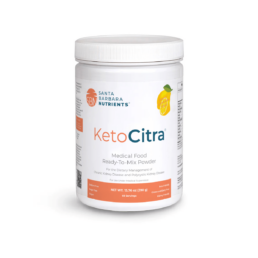Exercise may be one of the most underutilized yet effective interventions for the prevention and treatment of chronic disease. It has been shown to reduce the risk of complex chronic disease, help with blood pressure and glucose control and improve health-related quality of life. Other benefits of exercise include positive influence on mental health, mood and stress levels, important factors to overall health and wellness. In this blog, we will discuss the benefits of exercise in kidney health.
The implications of kidney disease are vast. It is an extremely costly disease, with many people progressing to end stage renal disease (ESRD) requiring dialysis or a kidney transplant, a significant physical and financial burden. Often the disease dramatically reduces an individual’s quality of life, the ability to perform activities of daily living, and independence.
Furthermore, kidney disease is associated with a high symptom burden, cardiovascular disease and increased mortality rates. With the prevalence of chronic kidney disease (CKD) on the rise, along with diabetes and hypertension, it’s imperative that prevention and an integrative medicine approach to kidney health become the norm along with exercise, a modifiable lifestyle factor.
Benefits of exercise in kidney disease
Physical inactivity is associated with a decline in kidney function in CKD. Exercise has the ability to markedly improve numerous health parameters associated with the disease, including:
- Cardiovascular health
- Systemic inflammation
- Muscle mass
- Gut health
- Mortality rate
- Risk factors associated with CKD, including diabetes and high blood pressure.
Exercise improves cardiovascular health and vascular function
Patients with CKD have an increased risk of cardiovascular disease (CVD). In fact, rates are estimated to be 10-20 times higher among ESRD patients than the general population. High blood pressure, the second leading cause of kidney failure in the US after diabetes, is closely related to adverse kidney and cardiovascular outcomes in CKD. This is why reducing blood pressure is imperative.
Benefits of exercise on blood pressure management are well-established. One study in pre-dialysis patients showed reductions in both systolic and diastolic blood pressure in participants who engaged in 1-hour of acute aerobic exercise such as walking. Another study found that 1 hour of supervised, home-based exercise reduced arterial stiffness over 3-months and improved outcomes in pre-dialysis patients.
Exercise positively effects inflammatory markers
Chronic inflammation has detrimental effects on health and is associated with increased cardiovascular events, the leading reason for mortality in CKD. Plasma inflammatory markers have been found to be positively affected by exercise. A study found that a 30-minute bout of exercise increased plasma IL-10 levels and regular walking 5 days a week for 6 months reduced the plasma IL-6:IL-10 ratio favorably. IL-10 is an anti-inflammatory cytokine, while IL-6 is inflammatory. The reduction in the IL-6:IL-10 ratio seen in the regular exercisers reflects a decrease in overall inflammation.
Exercise increases muscle mass
Muscle wasting, which promotes a sedentary lifestyle and increases morbidity and mortality, is another complication associated with CKD. An 8-week resistance training program (3 times a week) for pre-dialysis patients increased muscle mass, with similar findings in dialysis and transplant patients.
Exercise favorably impacts the gut microbiome
In a previous blog post, we discussed the close relationship between the quality of the microbiome and the health of the kidney, known as the gut-kidney axis. Those with a healthy microbiome balance, defined as an abundance of “good” bacteria, and the absence of pathogenic species or overgrowth, are less likely to develop CKD.
One study that compared active women and sedentary controls found that women who performed at least 3 hours of exercise per week had increased levels of beneficial bacteria. Additional studies have shown that exercise increases fecal butyrate concentrations and the relative abundance of butyrate-producing taxa. Butyrate is a short-chain fatty acid produced by bacteria that positively impacts intestinal health by supporting a favorable environment for commensal growth.
Exercise significantly reduces mortality rate in ESRD
ESRD is associated with considerable morbidity and mortality. A study of dialysis patients found that those who regularly exercised (2-5 times per week) had significantly lower all-cause and cardiovascular mortality rates than less active peers.
Type and Duration of Exercise
The type and duration of exercise depends on an individual’s level of functioning, endurance, and preference. Studies on exercise in CKD have included resistance training and aerobic activities that use large muscle groups continuously such as walking, cycling, and jogging. High-intensity interval training (HIIT), which has gained popularity in recent years, has shown to offer superior benefits in individuals with metabolic disease. In the few studies of HIIT in CKD, HIIT was found to be a safe and feasible option for individuals with CKD, including those undergoing hemodialysis. Regardless of type, duration, or intensity, regular exercise is beneficial in CKD patients.
Considerations & Contraindications
Individuals with CKD should consult their healthcare provider before beginning any type of new exercise routine. Certain subgroups of the CKD population need special considerations including those with known or suspected cardiac disease and dialysis patients.
It’s important to note that patients with kidney disease have identified certain barriers to exercise which include fear of injury or aggravating their condition, poor physical condition as a result of both co-morbid conditions and CKD-related symptoms, a lack of guidance from health professionals, and a lack of facilities and social support. Exercise facilities are less defined and less accessible to the CKD population in comparison to services provided for cardiac and pulmonary patients, resulting in fewer opportunities to develop peer support groups, which can significantly effect exercise adherence. It is our responsibility as integrative clinicians to discuss exercise with patients and include physical therapists and trainers in our protocols for management of CKD.
The Bottom Line
The majority of risk factors for CKD are related to lifestyle factors or conditions related to lifestyle disease. Exercise is an intervention that has the ability to positively impact a large number of those risk factors. Integrative and Functional Medicine prioritizes the vital role that physical activity plays in overall health and wellbeing, including exercise as part of the holistic therapeutic plan. There are benefits to any level of exercise, it’s important to guide patients to choose activities that are safe, meet them where they are, are appropriate to their level of physical activity, and are enjoyable.




